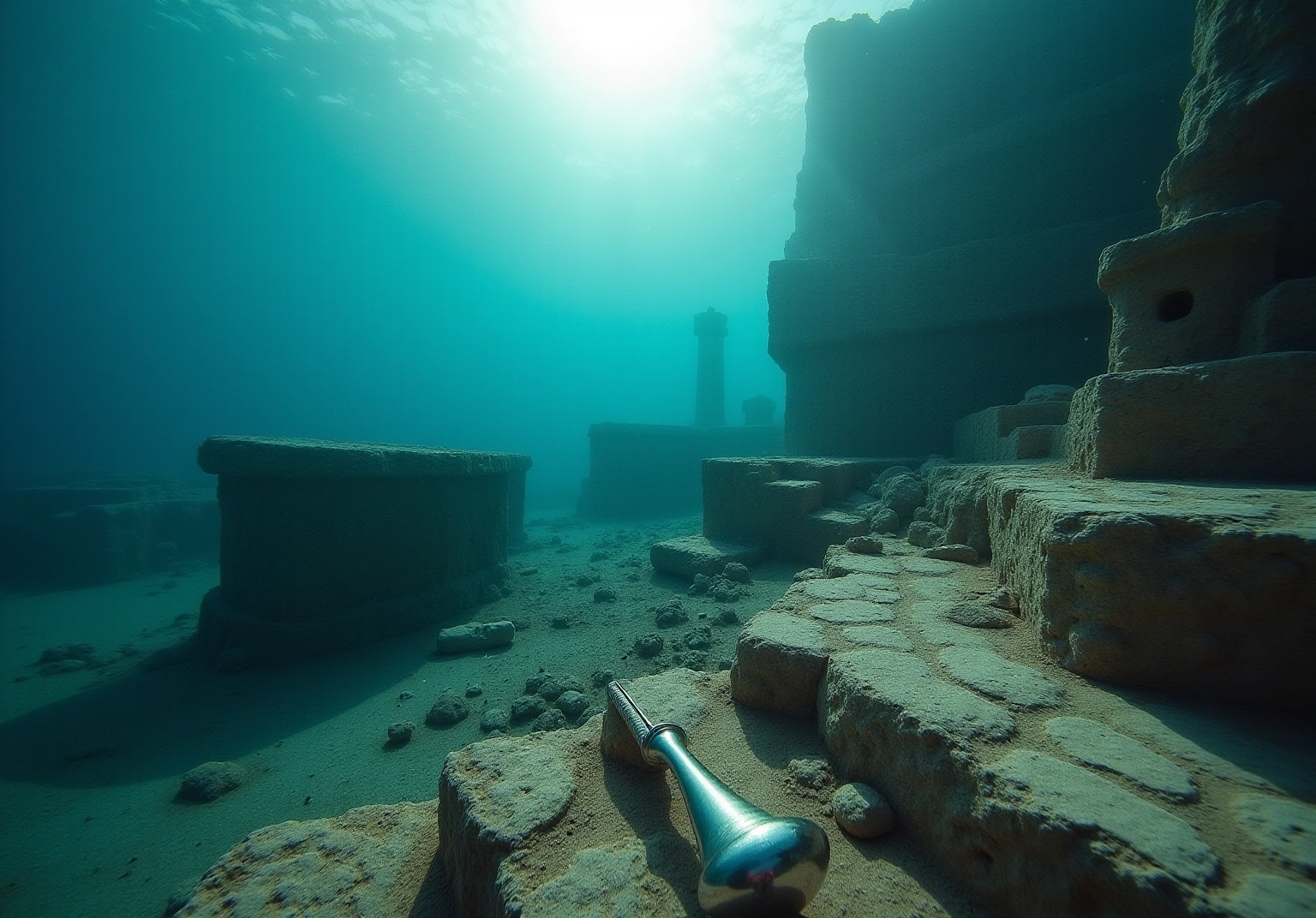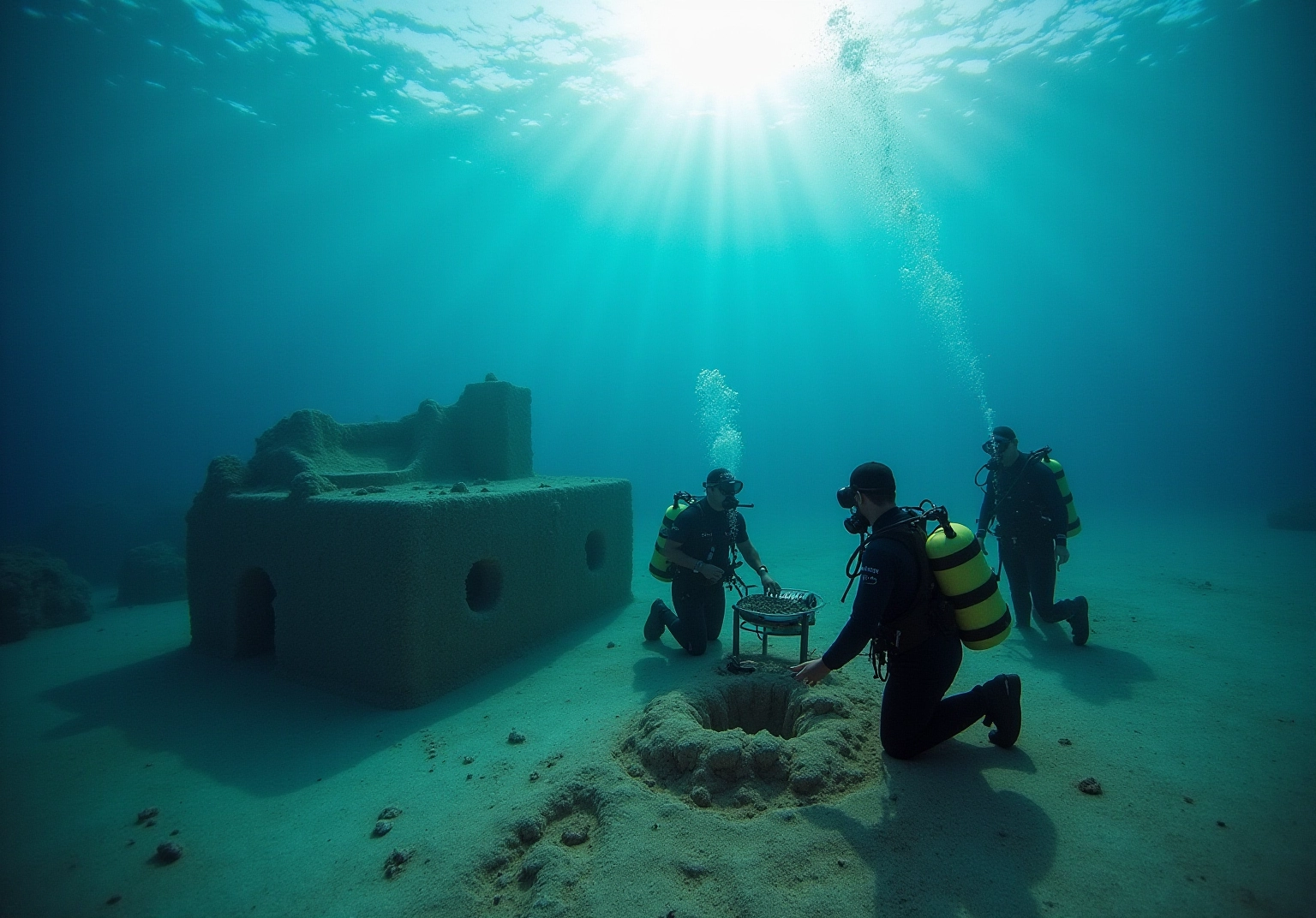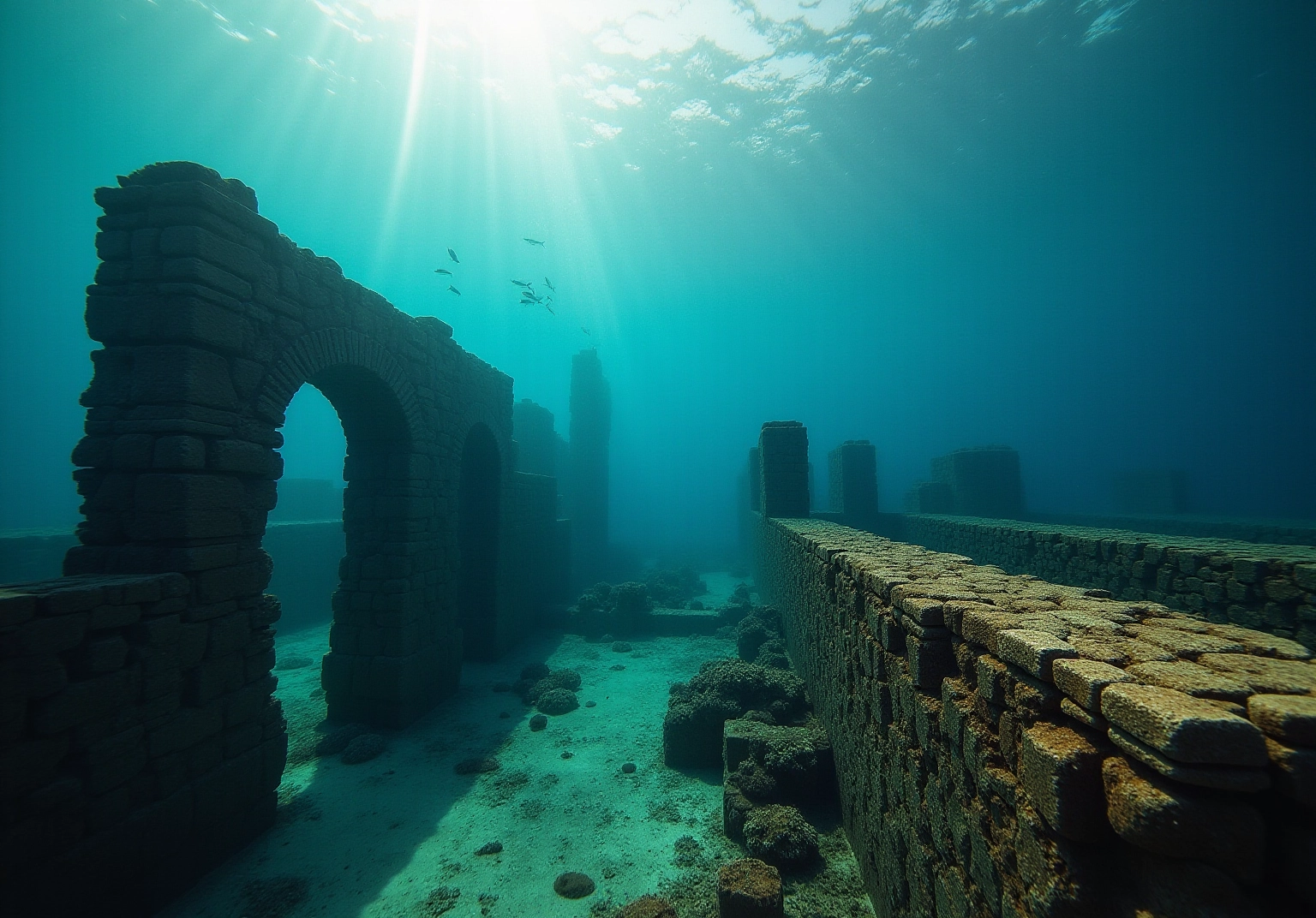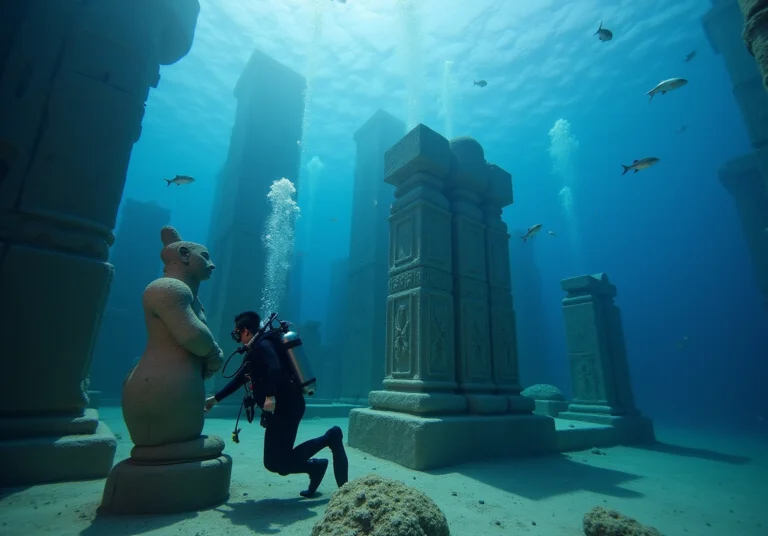Overview
Have you ever wondered about the mysteries of submerged civilizations? This article dives into the fascinating techniques and cultural insights surrounding these ancient societies, like Pavlopetri and Heracleion, which have been lost due to natural disasters, rising sea levels, and human activities. It’s a story that not only reveals rich cultural narratives but also highlights the urgent need for their preservation as part of our shared heritage.
Modern underwater archaeology is truly exciting! With advanced technologies like acoustic mapping, we’re uncovering historical sites that tell us so much about our past. Imagine exploring these underwater worlds, where every find is a piece of a larger puzzle. It’s a reminder of how important it is to protect these treasures for future generations. So, let’s embark on this journey together and discover the wonders that lie beneath the waves!
Key Highlights:
- Submerged civilizations often result from natural disasters, rising sea levels, and human activities.
- Pavlopetri in Greece, dating back 5,000 years, serves as a tangible example of a lost culture.
- The Gulf of Khambhat Cultural Complex reveals advanced architectural methods and social structures from ancient societies.
- The Harappan civilization may have roots in an advanced underwater civilization that was submerged.
- Alexandria and Heracleion showcase the impact of earthquakes and rising sea levels on ancient cities.
- Over 700 anchors and 60 shipwrecks found in Heracleion provide insights into historical maritime trade.
- Modern underwater archaeology utilises technologies like remote sensing and acoustic mapping for efficient exploration.
- The Antikythera Shipwreck and RMS Titanic highlight the importance of acoustic technology in archaeological discoveries.
- Underwater heritage sites serve as gateways to cultural identity, showcasing resilience and adaptation through history.
- The 2001 UNESCO Convention emphasises the global commitment to preserving underwater cultural heritage.
Introduction
Beneath the waves lies a world bursting with untold stories of civilizations that once thrived, now hidden by time and tide. Exploring these submerged cultures not only reveals the mysteries of our past but also showcases the remarkable resilience and ingenuity of ancient societies facing environmental challenges. Isn’t that fascinating?
However, as captivating as these discoveries may be, they raise important questions about how modern advancements impact the preservation of our underwater heritage.
What lessons can we learn from these lost worlds? And how can contemporary techniques in underwater archaeology help safeguard their legacies for future generations?
Let’s dive in and find out!
Explore the Origins of Submerged Civilizations
Have you ever wondered about the mysteries of civilization under water? They often arise from a mix of natural disasters, rising sea levels, and human activities. Take the legendary myth of Atlantis, for example! It sparks our imagination, but real places like Pavlopetri in Greece, which dates back around 5,000 years, show us the tangible remnants of lost cultures.
Recently, archaeological discoveries like the Gulf of Khambhat Cultural Complex, stretching over five miles long and two miles wide, reveal advanced architectural methods and rich cultural practices hidden 120 feet underwater. Isn’t that fascinating? These findings suggest that many ancient societies had sophisticated social structures and technologies, challenging the idea that organized civilizations couldn’t exist before 5,500 years ago.
Moreover, evidence points to the Harappan civilization possibly originating from an advanced civilization under water that was submerged due to rising sea levels. By diving into the origins of these underwater sites, we uncover insights into the socio-political dynamics that led to their eventual sinking. Plus, we gain valuable lessons for today about resilience and adaptation in the face of environmental changes! So, as you think about these ancient wonders, remember there’s so much to learn from their stories.

Discover Key Examples: Alexandria and Heracleion
Imagine standing in Alexandria, a once-thriving hub of culture and knowledge, now a part of a civilization under water due to earthquakes and rising sea levels. Isn’t it fascinating that archaeological efforts have unveiled remnants of its former glory, like the iconic Lighthouse of Alexandria? Similarly, the city of Heracleion, or Thonis, was swallowed by the sea during a devastating earthquake in the second century BCE. Rediscovered in 2000, this underwater treasure trove revealed a stunning array of artifacts, including temples and statues.
What’s truly remarkable is that over 700 anchors and at least 60 shipwrecks have been identified in the area! These finds offer us a glimpse into the historical maritime trade and shipbuilding techniques of the past. Recent excavations in Heracleion have brought to light significant discoveries, such as silver ritual tools. These are particularly rare, given the high value of silver in early Egypt. As Islam Selim, Head of the Underwater Archaeology Department at the SCA, noted, ‘The finding of the silver ritual plates and tools was quite uncommon since silver was highly precious to the Egyptians.’
These submerged cities are not just remnants of the past; they showcase the rich history of civilization under water and highlight the importance of preserving our aquatic heritage. By exploring these sites, you gain insights into historic trade routes, religious practices, and daily life in these ancient civilizations. The discoveries from both Alexandria and Heracleion not only deepen our understanding of ancient cultures but also underscore the vital need to protect these submerged sites for future generations. So, are you ready to dive into this incredible history?

Utilize Modern Techniques in Underwater Archaeology
Contemporary subaquatic archaeology is like diving into a treasure chest of secrets from civilization under water! With advanced methods such as remote sensing, mapping technologies, and submersibles, archaeologists are uncovering stories that have long been hidden beneath the waves. Take side-scan technology, for example—it’s essential for producing detailed maps of the seafloor, revealing hidden structures that might otherwise go unnoticed. This technology has proven invaluable; studies show that acoustic mapping significantly boosts the efficiency of marine exploration, enabling archaeologists to cover larger areas in less time. In fact, the worldwide acoustic detection system market was estimated at USD 4,162.6 million in 2023 and is projected to reach USD 6,437.8 million by 2030. This growth highlights just how important acoustic technology is becoming in various fields, including marine archaeology.
Exciting case studies, like the Antikythera Shipwreck, showcase how acoustic mapping helps us understand historical maritime trade and technology. Dating back to the First Century BCE, this site provides fascinating insights into the complexity of ancient Greek shipbuilding and trade. It really emphasizes the importance of marine archaeology in revealing our historical narratives! Similarly, the remains of the RMS Titanic, discovered in 1985, illustrate how acoustic technology can lead to significant archaeological discoveries, ultimately impacting maritime safety standards and procedures.
Recent advancements in acoustic technology are taking things to the next level! For instance, the integration of 3D modeling allows archaeologists to digitally reconstruct submerged sites, giving us a clearer picture of their original layouts and cultural significance. This combination of sound navigation mapping and digital modeling not only enhances the precision of archaeological studies but also helps protect our cultural heritage lying beneath the surface.
Experts in the field really emphasize the importance of these technologies. Marine archaeologist Graham Hancock beautifully put it, “Sonar mapping has transformed our method of exploring the depths, allowing us to find and record sites that were previously considered lost to time.” This sentiment captures a growing recognition of sonar’s vital role in unveiling the stories of civilization under water that once thrived. It’s truly an essential tool for contemporary marine archaeology, inviting you to dive deeper into the past!

Understand the Cultural Significance of Underwater Heritage
Underwater heritage sites are like gateways to our shared history and cultural identity, showcasing a civilization under water that weaves together stories of human resilience, adaptation, and creativity in the face of environmental challenges. Imagine exploring the sunken ruins of ancient cities, like the fascinating ancient port of Ostia! These sites offer incredible insights into trade routes, migration patterns, and the rich cultural exchanges that shaped civilizations.
Preserving these underwater treasures is essential for future generations. It allows them to connect with their heritage and learn valuable lessons from the triumphs and failures of those who came before us. When you interact with aquatic heritage, it fosters a sense of stewardship and responsibility, encouraging all of us to protect and celebrate our cultural legacy.
Recent studies show that engaging with submerged archaeology doesn’t just raise awareness—it deepens our appreciation for the stories these ruins tell. Isn’t it amazing how these remnants of the past reinforce our understanding of cultural narratives? As we approach 2025, the need to safeguard aquatic cultural heritage becomes even clearer, ensuring these invaluable resources are available for exploration and education in the future.
The 2001 UNESCO Convention on the Protection of the Underwater Cultural Heritage lays down important guidelines for protecting these sites, highlighting our global commitment to their preservation. Plus, exciting advancements in marine archaeology, like photogrammetry and autonomous underwater vehicles (AUVs), are changing the way we explore and safeguard these underwater wonders. So, are you ready to dive into this adventure and discover the stories waiting beneath the waves?

Conclusion
Exploring the depths of submerged civilizations reveals a captivating story about human resilience and ingenuity! Just think about the remnants of ancient cities like Alexandria and Heracleion—they not only challenge our understanding of history but also invite you to reflect on the intricate relationship between humanity and the environment. By studying these underwater sites, it becomes clear that civilizations have thrived, adapted, and ultimately succumbed to the forces of nature, leaving behind invaluable lessons for us today.
Throughout this article, we’ve highlighted the significance of modern techniques in underwater archaeology. Tools like acoustic mapping and 3D modeling have truly revolutionized how archaeologists uncover the mysteries of submerged cultures! These advancements not only enhance our understanding of historical trade and technology but also emphasize the importance of preserving these underwater treasures for future generations. The stories of lost civilizations, such as those of the Harappan and the ancient port of Ostia, serve as powerful reminders of our shared heritage and the cultural narratives that shape our identity.
As we continue to explore our underwater heritage, it’s crucial to recognize the responsibility that comes with it. Engaging with these submerged sites fosters a sense of stewardship, encouraging a collective commitment to protect and celebrate our cultural legacy. The ongoing advancements in marine archaeology, along with global efforts like the UNESCO Convention, underscore the importance of safeguarding our underwater heritage. By diving into this rich history, there’s an opportunity not just to learn from the past but to inspire future generations to cherish and protect the stories waiting beneath the waves!
Frequently Asked Questions
What are submerged civilizations?
Submerged civilizations refer to ancient cultures and societies that have been lost beneath water due to natural disasters, rising sea levels, or human activities.
What is the significance of the myth of Atlantis?
The myth of Atlantis captures the imagination but serves as a symbolic representation of the mysteries surrounding real submerged civilizations.
Can you provide an example of a real submerged civilization?
Pavlopetri in Greece is a notable example, dating back around 5,000 years, showcasing tangible remnants of lost cultures.
What recent archaeological discoveries have been made regarding submerged civilizations?
The Gulf of Khambhat Cultural Complex has been discovered, which extends over five miles long and two miles wide, revealing advanced architectural methods and rich cultural practices located 120 feet underwater.
What do these findings suggest about ancient societies?
These findings indicate that many ancient societies had sophisticated social structures and technologies, challenging the belief that organized civilizations did not exist before 5,500 years ago.
What is the connection between the Harappan civilization and submerged civilizations?
Evidence suggests that the Harappan civilization may have originated from an advanced civilization that was submerged due to rising sea levels.
What insights can we gain from studying submerged civilizations?
By exploring the origins of these underwater sites, we can learn about the socio-political dynamics that led to their sinking, as well as valuable lessons on resilience and adaptation in response to environmental changes.


































